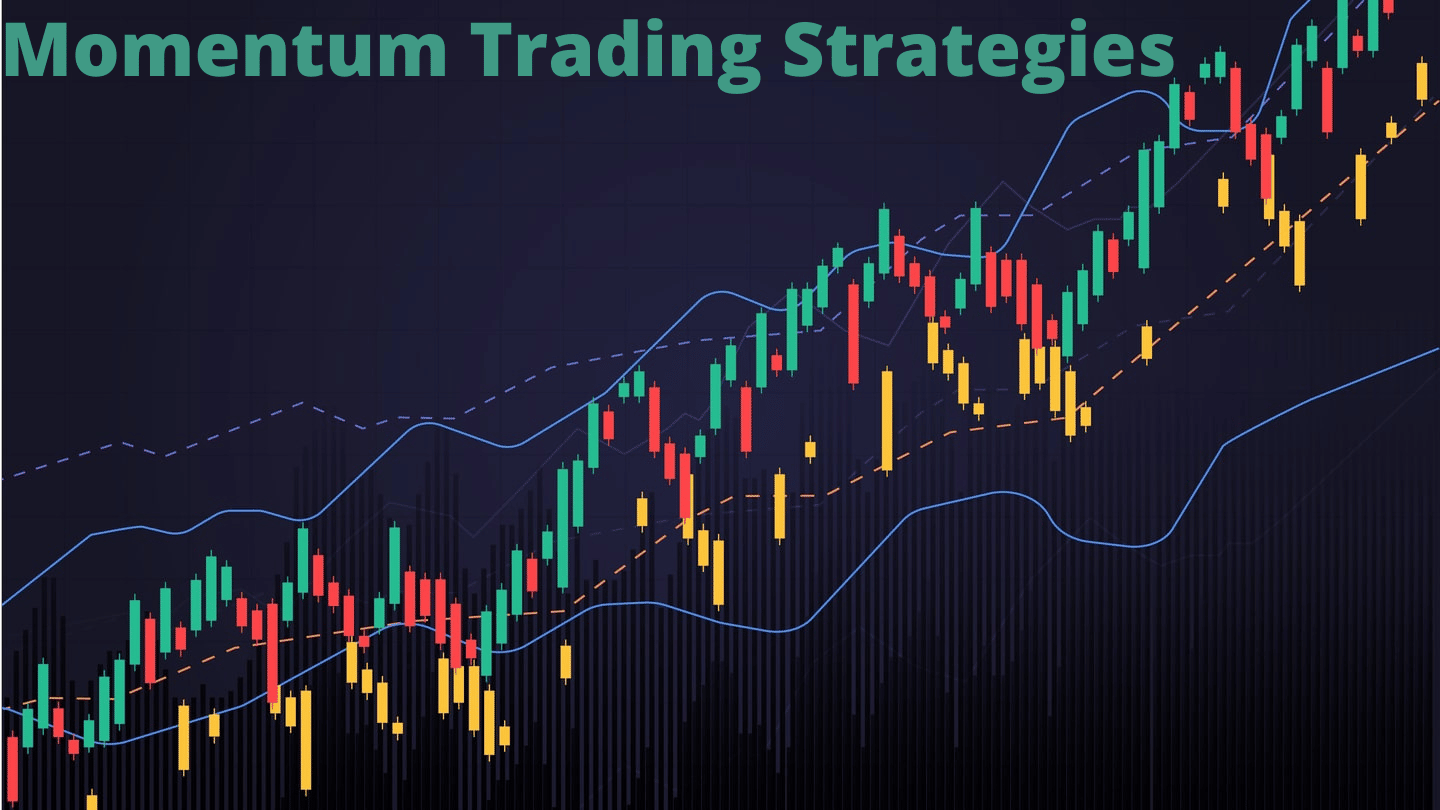Prima facie, Momentum Trading Strategies is in the nature of a knee jerk reaction to market information. The idea of selling losers and buying winners is appealing. But it does apparently flies in the face of Wall Street wisdom that advocates “buy low, sell high”.
Momentum trading aims to benefit from volatility by taking short term positions in stocks and going up , selling them just as they show signs of weakening in value. The funds are then shifted to new positions. Heiken Ashi Trading Strategy is thus maverick and unorthodox.
Trading Momentum : determinants
Trading momentum markets require complex risk management rules , which in turn factor in volatility, overcrowding, profit reducing hidden traps. FOMO or fear of missing out keeps most traders from showing sufficient regard for these rules. The rules are briefly as follows:
- Selection, or equities opted for;
- Timing at closing/opening of trades, and attendant risk;
- Entering the trade early;
- Wide spreads with holding period;
- Consistent profitability of exit points.
Trading strategies & security
Choose liquid securities when handling momentum strategies. Avoid leveraged or inverse ETFsbecause their price swings do not accurately track futures markets or underlying indices. Regular funds are great trading vehicles. However, they do diminish smaller percentage gains and losses, as compared to individual securities.
Search for securities that trade in excess of 5 million shares per day. Even low float issues can be transformed into highly liquid instruments at the time of upheaval.
Keep a sharp look out for ‘flavour of the day’, when the public imagination is occupied by new concepts or products. These even lead analysts to re-calculate profit estimates. Story stocks are frequently bought, thanks to biotechs and midsize tech companies.
What is technical analysis?
Technical analysis is concerned with forecasting future financial price movements based upon a study of past price movements. Technical analysis helps investors expect what is likely going to happen to prices over the course of time.
traders can apply technical analysis to stocks, commodities, indices, futures . Price data or market action can refer to any combination of open, low, high, volume, close or open interest for a certain security over a certain timeframe. The time frame can be intraday, daily, weekly or monthly price data and last from anywhere between a few hours to years.
Technical analysis makes use of a wide variety of charts that show price over time.
Trading Momentum & Risk Management
The risk has to be examined in detail, or the momentum trading strategy could collapse. Keep eyes peeled when momentum trading for the following:
- Entering a position too early, even before a momentum move is confirmed;
- Closing position too late, post saturation;
- Failing to pay attention to the screen, neglecting to take note of changing trends, reversals or potentially surprising news that could catch everyone off guard;
- Having a position open overnight. Stocks are particularly sensitive to external factors happening post closing of day’s trading;
- Not deciding soon enough to close a bad position, missing the right direction entirely.
Momentum Trading : Entry Timing
The greatest momentum trades when a news shock surprises, leasing to swift movements across price levels. Subsequently, this sets off buying/selling signals for attentive traders who enter and are promptly rewarded with immediate profits. As the trade evolves yet another momentum capital batch enters, with count swings that separate the wheat from the chaff. There are volatile whipsaws and reversals.
Early positions present traders with the greatest rewards , with minimum risk. Aging trends are to be ignored. Most traders fail to see the opportunity, and are too late when it’s time to act.
Trading Momentum : Position Management
Position management is time consuming . The securities carry wide bid/ask spreads. Wide spreads require larger movement in your favour while also marching through wide intraday ranges that expose stops ,even as technicals stay intact.
Opt for a holding period wisely , since risk increases the longer you remain positioned. Day trading forces traders to take larger positions to compensate for the bigger profit potential of multi day holds. On the other hand, you ought to diminish the position size when holding through position sessions, allowing greater movement and stopping placement further away from current action.
Trading Momentum : Profitability & Swift Exits
Exit when the price is moving swiftly into an overstretched technical state. This state is marked by a series of vertical bars on a 60 minute chart. Moreover , the price could very well pierce the third/fourth standard deviation of a top or bottom 20 day Bollinger band.
Screw tight the stops. You might also consider a blind exit just as technical barriers are hit. Exit or take partial profits soon with simultaneous crossovers signaling potential trend changes.
Momentum Trading : Advantages
- High profits over a short period;
- Leveraging volatility to own advantage;
- Leveraging emotional decisions of other traders.
Momentum Trading : Disadvantages
- High turnover;
- Time intensive;
- Market sensitive.
Are such trading strategies worth your while?
Momentum trading might not be profitable for all traders. As an individual investor, practicing momentum trading may likely lead to overall portfolio losses. When buying a rising stock or selling a falling stock, momentum investing fund participants would have gotten ahead of you. Unless you are able to time everything right, you will be left in a most vulnerable state. Turnover fees will eat up your profits even if you are left largely unharmed initially.
Advantages of Momentum Indicators
These indicators show price movements over time and the extent to which they will be/are strong. Price movement direction does not factor here. Momentum indicators assist traders as well as analysts to spot points where the market is most likely to reverse. The points are identified by studying the divergence between price movement and momentum.
Since momentum indicators give the relative strengths of price movements , omitting price movement direction, they are used in conjunction with trend lines and moving averages.
Momentum Investing
Momentum investing aims at buying securities characterised by upward price trend or short selling securities featuring a downward trend. The basic premise behind momentum investing is that once a trend is established, it will in all likelihood continue.
A technical trading strategy, momentum investing is dissimilar to value investing. Momentum investors are least concerned with a firm’s operational performance. Momentum investors use technical indicators to analyse securities in terms of trends. Thereby, these also assess the trend’s strength. Put another way, momentum indicators determine price momentum level in the market. Momentum investors also aim to comprehend, analyse, and predict the behaviour of other investors. A momentum investing strategy is greatly enhanced when aided by a high awareness of behaviour biases and investor emotions.
Momentum Trading Technical Analysis Tools
Technical analysis is vital to any momentum strategy. Traders having to spend a major part of their time determining trend strength in asset prices, awareness of important technical indicators is vital to fruitful momentum trading strategy execution.
Popular technical indicators used in momentum trading :
Trend Lines
Trend lines monitor price movements. On a price chart, a trend line is drawn between two successive points. In case the resultant line is sloping upward, we have a positive, bullish trend. You as an investor would do well to buy shares at this point.When the resultant line is sloping downward, the trend is negative, bearish. Selling short is profitable.
Moving Averages
A moving average makes a great momentum indicator. It permits traders to mark out the ongoing trend , simultaneously eliminating most of the market noise from unimportant price fluctuations. You have an upward trend when a security’s price stays at or above a moving average . When a price stays put at or below a moving average, a downtrend is generally indicated.
Stochastic Oscillator
The stochastic oscillator relates an asset’s up-to-date closing price to the prices over a particular time period. The trend is positive when the closing price is in the vicinity of the high of the time period price range. You have a downward trend when the closing price is near the low.
Stochastic Oscillator values might range anywhere between 0 and 100. 50+ would indicate a strengthening uptrend. Numbers less than 50 indicate a downtrend gaining momentum. Nevertheless, an oscillator with a reading less than 20 points out oversold conditions with the possibility of a market reversal to the upside. Similarly, readings greater than 80 point to overbought conditions , with a bearish reversal probably in the offing.
The Average Directional Index (ADX)
The Average Directional Index (ADX) is a well known momentum indicator . The ADX is used to determine a trend’s existence, besides the strength of a trend. This is arrived at by calculating the expansion/contraction of a security’s price range over a particular time period.
ADX values range between 0 and 100. Values less than 25 give a ranging market without a clear trend. A 25+ reading gives a trend’s existence. Readings higher than this point to a stronger trend. Put another way, an ADX reading of 40 points out a stronger trend relative to an ADX reading of 30.
Momentum traders search for divergence between price movement and the ADX. This is interpreted as a weakening of the momentum. There is bearish ADX divergence from price when price marks a new high even as the DX fails to reach a new high reading. A bullish ADX divergence from price is seen when the price plummets to a new low even as the ADX does not offer a new low reading.
Moving Average Convergence Divergence
The MACD is a popular momentum indicator. It uses two moving averages , turning them into an oscillator by extracting the longer average from the shorter average. The implication is that MACD points out momentum whilst oscillating between moving averages as they converge, overlap, and move away from each other.
The MACD uses two moving averages . The indicator generally uses the 12 day and 26 day exponential moving average, or EMAs, removing the 26 day from the 12 day. The MACD line results from this. This is generally then graphed with a 9 day EMA, a signal line that can identify price movement shifts.
The most important MACD feature is the histogram , showing the difference between the MACD line and the 9 day EMA line. The histogram signals a declining uptrend, when it is positive. Conversely, the histogram signals the downtrend is declining, when it is negative.
Relative Strength Index/RSI
The relative strength index, an oscillator as well, serves as a price change metric , covering also the speed of such change. The indicator moves to and fro between zero and 100. Signals are spotted by analysts and traders when they seek divergences, unsuccessful oscillator swings, and when the indicator crosses over the centreline.
RSI values above 50 signal positive and uptrend momentum. When the RSI touches 70 or above, it indicates overbought conditions. On the other hand, RSI readings that decline below 50 show negative and downtrend momentum. At below 30, RSI readings are an indication of , in all likelihood, oversold conditions.
How momentum traders work momentum investing ?
Momentum traders using a momentum investing strategy aim to profit from either purchasing or selling short securities even as they are aggressively trending. Then, the price action momentum is high. The price increasing or decreasing over a wide range in a comparatively short time period proves high momentum. Markets showing high momentum show high volatility as well.
As a rule, momentum investing is short-term investing. Momentum traders aim to get hold of a part of the trend price movement.
A momentum investing trade
A trader makes use of technical indicators namely moving averages, trend lines, the ADX seeking to identify and confirm a trend’s existence. As the trend strengthens or gains momentum, the trader takes a market position in the trend direction. When the trend momentum weakens, the trader aims for a profitable exit , before any actual trend reversal.
Conclusion
Admittedly momentum trading is not for everyone. But it can often lead to superb returns when handled the right way. The trading demands very strict discipline. Trades must be closed at the first sign of weakness. Funds must be carried over and placed into a trade that is showing strength. Commissions are the curse of momentum trading. But active short term traders are fortunate because of low cost brokers who can let them in on the action without the usual burdens. Capixal comes to mind.





